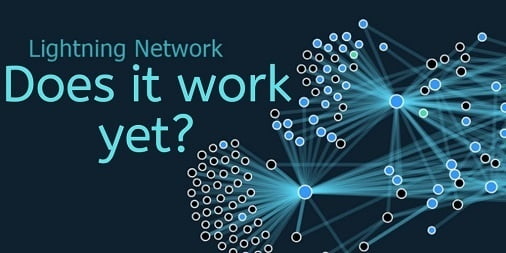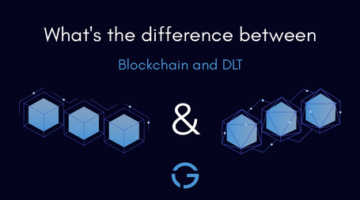Nuts and Bolts of the Recent Developments in the Lightning Network and User Experience

With Bitcoin scalability problem getting out of hand, the Lightning Network seems to be the only solution. Well, since so much hope has been placed on the platform, the Network has undergone significant developments, especially in the past year. It now has more than 2,800 nodes with active channels, 20,000 channels and a total network capacity of $2 million.
Over the past year, the Bitcoin community has witnessed substantial improvements in payment routing, the launch of Bitcoin mobile wallets, improved liquidity into the network and the launch of Lightning fiat ramps all as a result of Lighting Network.
This analytical extract focuses on the recent development of the Lightning Network also looking at several areas that need improvement for enhanced user experience.
LIGHTNING NETWORK – Overview
Lightning Network was launched in 2015 as a ‘Layer-2’ payment protocol which would operate on top of an existing Bitcoin blockchain network enabling ‘off-chain’ transactions leading to higher transaction-per-second (TPS) and at a much lower transaction fee.
In essence, the Lightning Network is a scalable bi-directional payment system built on the initial Bitcoin network to facilitate considerably cheaper transaction fee as well as secure and faster transaction settlement times. Since its launch in the second quarter of 2013, Lightning Network has undergone significant growth, but it’s still far from reaching full potential mostly regarding user experience.
Currently, the network supports more than 8,000 Lightning nodes with increased popularity among merchants who are beginning to embrace the technology.
Lightning Network Chronology of Development
- Q2 2013- Matt Corallo, Bitcoin Core contributor Matt Corallo develops a payment channel to implement the bitcoin library.
- Q2 2015- Corne Plooy develops Amiko Pay- a network of payment channels. The platform requires backwards-incompatible changes to the Bitcoin protocol.
- Q1 2016- Thaddeus Dryja and Joseph Poon establish the Lightning Network’s whitepaper. The paper proposed a network with a fully backwards design compatible with the existing Bitcoin network.
- Q2 2017- the network was officially released on the Litecoin mainnet.
- Q4 2017- A token holder vote was conducted to establish new mainnet activities, including new OPcodes necessary for future Lightning support.
- Q 1 2018- the Network is officially launched on the Bitcoin testnet.
- Q2 2018- Lightning is released on the Bitcoin mainnet
- Q4 2018-Lightning users lock $1 million in BTC into payment channels across 1,800 nodes.
- Q 2 2019- Lightning is officially released on the Decred testnet.
Recent Developments in Lightning Network
1. Lightning Network Deamon (Indmon)
Indmon was released on July 26, 2019, by developer Valentine Wallace. Indmon is a drop-in, dockerized monitoring solution for 1nd. The main aim of Indmon is to foresee issues in the Lightning network way long before they occur. It functions as a monitoring tool operated by nodes. Users can use Indmon to track transactions as well as monitor their channels. According to Wallace, Indmon will develop the network by contributing to its stability and also provide real-time feedback on events occurring in the network.
2. Lightning Loop (Loop In/Loop Out)
Lightning Loop is a non-custodial service provided by Lightning Labs to bridge on-chain and off-chain Bitcoin using submarine swaps. The current Loop software offers two iterations Loop In (on-chain to off-chain) and Loop Out (off-chain to on-chain). Lightning Loop enables two users to transact payment instantaneously substantially increasing flexibility and usability on the Bitcoin network.
3. Eltoo
Eltoo is a recent development on the Network that functions to enhance payment security and also prevent a false alarm. Eltoo prevents the possibilities of cheating the system, usually through broadcasting an outdated balance. The platform also looks at implementing a soft fork in Bitcoin’s protocol that could make it easy to implement the security system via the Lightning Network.
4. Neutrino
Like Eltoo, Neutrino functions to enhance the payment security on the Network. Neutrino builds on the simplified payment verification(SPV) and enhances payment security by enabling wallets to determine particular threatening transactions which did not take place on the blockchain. While it was designed specifically for Lightning, Neutrino can still be used in conventional light wallets.
5. Trampoline Payments
Developed by Christian Decker, Trampoline Payment is an innovation on the Lightning Network intended to provide a completely new method of routing payments across the network. Trampoline payments will allow nodes to automatically select a lighter implementation and outsourcing routing calculation to the next “trampoline” on the network until the destination is reached.
6. Submarine Swaps
Submarine Swaps is still an ongoing development on the Lightning Network. The platform will facilitate payments to other Bitcoin users from within a payment channel. Submarine Swaps is similar to the Lightning Loop in some aspects and employs an intermediary to link the two sides and also link Lightning to the rest of the chain.
User Experience Still Not Perfect on the Lightning Network
While it’s evident that there have been significant improvements on the Lightning Network, user experience is still unsatisfactory as affirmed by Bitfinex CTO Paolo Ardoino. According to Ardoino, Lightning Network still has a long way to go regarding user experience. Some of the issues experienced on the network and needs urgent resolve to include:
- The transactions in the Network occur off-chain and interact via nodes. This, therefore, necessitates that participants have to be online when conducting transactions. This is unlike traditional Bitcoin transactions which are on-chain.
- Lightning necessitates that private keys stay online, thus exposing it to attacks. Offline or cold storage is not possible on the Lightning Network thus quite disadvantageous given that cold storage is the most secure form of storage.
- The Network is still under very early development, and therefore it is very probable that it contains undiscovered bugs as well as potential vulnerabilities. For instance, Lightning Network was recently alleged to contain a dangerous bug present in the code in which could cause users to lose their funds. The bug was initially flagged to the public on Aug 30, 2019, by Rusty Russel-a Lightning Network developer. Nonetheless, the bug has reportedly been fixed, and all major Lightning Network services providers have already upgraded their software.
- We previously posted user experience on the lightning network being a dead end.
The Bottom Line
Lightning Network is supposed to be a promising solution to Bitcoin’s scalability issues which greatly limits its usability. With substantial developments in the past year, coupled with increasing adoption, the network is improving but does it really have a bright future?
The user experience is not good and far too complicated for mass adoption as the average Joe on the street will not jump through that many hoops, especially when there are cryptocurrencies like XRP, VET and even Tron with miniscule fees and sub 10 second settlement times. Bitcoin and the lightning network do not have a place in the real world with real people and even Bitcoin fanboys have started to admit they now use XRP for their transactions so even the most die hard Bitcoin loving business will take the better option and use a better crypto for transactions and then convert that to Bitcoin at the end station.

Relevant news

What Differentiates the Blockchain from Distributed Ledger Technology?
Blockchain tech was developed to timestamp digital documents so that it’s virtually impossible to backdate…

The Simpsons jokes about “Useless, Energy-Gobbling” Crypto
The official Bitcoin Twitter channel promoted a video clip from the Simpsons which they claim…

What Would Happen to Bitcoin Miners After the Next Halving?
With more than 85% of bitcoin already mined, users in the crypto space are growing…

ASIC Gives An Australia Fintech Firm the Go-ahead to Launch Bitcoin Fund
On January 20, 2020, an Australia financial regulator announced that it had given its approval…

Airbnb Now Bookable with Bitcoin and Lightning Network Through Fold App
On November 12, 2019, Bitcoin payments firm Fold announced that it now supports home-sharing giant…

“Why I left Bitcoin” – All the best answers
Recently a Twitter conversation went viral among our Crypto Twitter friends, namely the question of…
